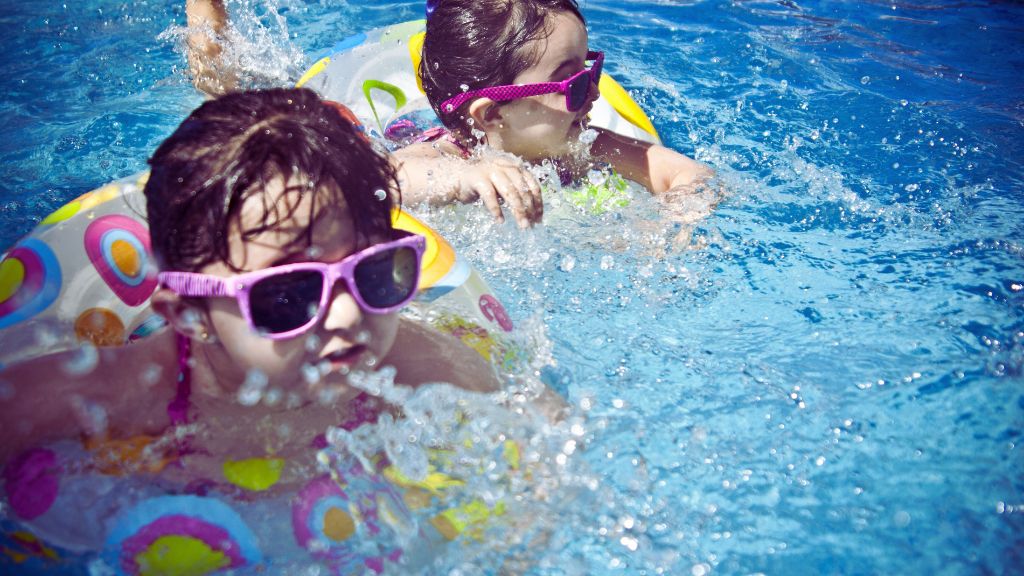Table of Contents
How Does National Water Safety Month Help Children with Autism Stay Safe While Swimming?
Water activities can be a source of joy and relaxation for families, especially as the summer approaches. However, for parents and caregivers of children with autism spectrum disorder (ASD), water safety is often a critical concern. Sadly, drowning remains a leading cause of accidental death for children with autism.
National Water Safety Month, observed each May, is an essential reminder for families to take necessary precautions and educate themselves on best practices for keeping their children safe around water.
The American Red Cross describes children on the ASD spectrum as roughly 160 times more likely to drown than children without ASD.
Other reports demonstrate that children with autism are often inclined to wander or ‘elope’ at some point in their lives, making them more vulnerable to water-related accidents.
Other traits commonly associated with autism may also increase the risk of drowning. As a result, many families ask: How does National Water Safety Month help children with autism stay safe while swimming?
The answer lies in awareness and preparation.
National Water Safety Month aims to educate parents, caregivers, and communities about the potential dangers of water for children, including those with autism. Support around water safety may also come in the form of ABA therapy, which teaches vital life skills.
This guide by ABA Centers of Washington outlines some essential tips for keeping children with autism safe in and around water. We will also discuss how ABA therapy can help.
So, keep reading to learn more about this trending topic that serves many and saves lives!
Click here to discover more about what makes ABA care with ABA Centers of Washington stand out. You can also read our other blogs about ABA therapy and life on the ASD spectrum here!
Why Water Safety is Critical for Children with Autism
According to a study published in Pediatrics, roughly half, or 49%, of children with autism attempt eloping in a safe environment, which is approximately four times higher than their unaffected siblings.
This increased risk often arises from their natural attraction to water, along with challenges in recognizing danger, sensory sensitivities, or difficulty following verbal instructions during emergencies.
National Water Safety Month plays a pivotal role in raising awareness of these risks and guiding families toward preventative measures that make water environments safer for children with autism.
Practical Water Safety Tips for Autism Families
Here’s how to adopt critical safety strategies and ensure your summer is enjoyable and hazard-free.
1. Start with Specialized Swim Lessons
Enroll your child with ASD in swim lessons led by instructors experienced in working with children with autism. These sessions can be tailored to your child’s needs and teach life-saving skills like floating and exiting deep water safely.
2. Set Clear Safety Rules
Establish consistent and straightforward rules for water activities. Reinforce these with visual aids or social stories to make understanding easier.
For example, rules like “no swimming without an adult” should be a key focus.
3. Use Barriers and Life Jackets
Guardians should install barriers such as pool fences and self-latching gates to prevent unsupervised access to water proactively. Additionally, always have your child wear a properly fitted, U.S. Coast Guard-approved life jacket near any body of water.
4. Designate a Water Watcher
During water-related activities, assign one adult as the designated “water watcher.” Their sole responsibility is to supervise the child closely, without distractions like phones or multitasking.
5. Practice Water Safety Skills Regularly
Make water safety practices engaging. Teach your child how to float on their back, reach for flotation devices, or call for help if they’re in trouble. Repetition builds confidence and essential muscle memory for emergencies.
6. Develop a Family Water Safety Plan
Outline a family water safety plan that includes emergency contacts, safety equipment checks, and location-specific guidelines. Consider investing in wearable tracking devices for children prone to eloping.
7. Communicate with First Responders
Share your child’s unique needs with local emergency responders. Provide details about triggers, calming techniques, or communication methods that could assist in the event of an emergency.
How ABA Care Can Improve Water Safety
Applied Behavior Analysis (ABA) therapy focuses on helping children with autism develop life skills, including water safety behaviors.
ABA techniques like positive reinforcement can teach children to follow instructions, recognize potential dangers, and respond appropriately to water-related risks.
For instance, ABA sessions may include role-playing scenarios where children practice calling for help or rehearse step-by-step actions like grabbing a flotation device. Ultimately, these skills can be invaluable for fostering both confidence and safety around water.
Enjoy Safer and Happier Summers with the help of ABA and Water Safety
This National Water Safety Month is your opportunity to act and ensure your ASD child’s safety around water. Whether it’s enrolling in swim lessons, building a water safety plan, or learning through ABA therapy, every step leads to a safer and more enjoyable summer.
Happy, safe swimming from ABA Centers of Washington!
Celebrate National Water Safety Month with ABA Centers of Washington
At ABA Centers of Washington, we offer tailored ABA programming alongside autism diagnostics to empower youth on the spectrum and their families to experience safer, brighter futures.
Want to learn how ABA therapy can transform water safety for your family?
Contact our ABA team at ABA Centers of Washington today for personalized guidance by calling (877) 554-0710 or via this online link.
Take the first step toward a worry-free summer! Together, we can create a safe environment for your child to explore and enjoy water activities with confidence.
You don’t have to face safety challenges alone; we’re here to support you every step of the way.








